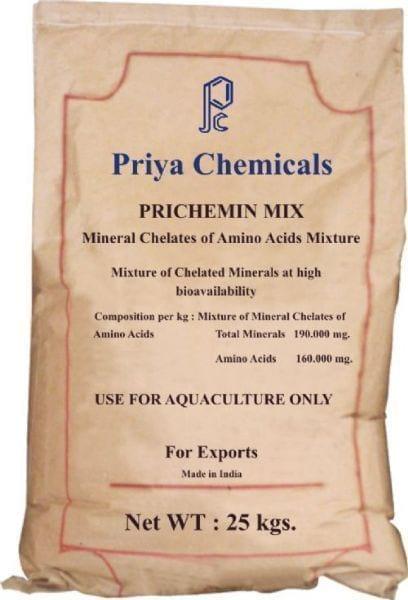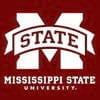Explore all the information on
Fish feed and nutrition
Welcome to the page about Fish feed and nutrition of Engormix; a source of knowledge on Fish feed and nutrition.
Introduction Animal production relies on the supply of nutritious feeds supporting high growth, welfare and health of animals and the production of high-quality products in an environmentally sustainable and profitable manner. With feed cost representing 50 to 80% of the total production cost, feed manufacturers have a very important role in the overall economic viability of animal agriculture enterprises. Animal production involves a complex “nutritional supply...
Comments : 3
Recommendations: 2
Introduction Indian giant carps (IMCs), along with fish species such as Catla catla, Labeo rohita and Cirrhinus mrigala, are economically important freshwater fish species widely cultivated in the Indian subcontinent They are highly valued for their meat quality, fast growth rate, and adaptability to various environmental conditions. The cultivation of IMCs plays a crucial role in the aquaculture sector, contributing significantly to food security and livelihoods in the region....
Comments : 0
Recommendations: 1
Introduction Aquaculture has become a vital component of global food production, contributing significantly to food security, nutritional requirements, and economic development [4]. In India, aquaculture plays a crucial role in the rural economy, with Indian major carps, particularly Rohu (Labeo rohita) and Catla (Catla catla), being predominant species in freshwater fish culture. Efficient feed management practices are essential for sustainable aquaculture, as feed constitutes...
Comments : 0
Recommendations: 1
Introduction Fish or any animal needs an adequate balanced diet that contains all the required necessary essential nutrients to have optimal growth. These nutrient requirements vary from species to species, sex, age, the environment where it lives, different stages of larval development, and the health status of the species. A minimum of 35 to 45 nutrients is required for marine fish. To have the best optimal growth and reduce pollution in the environment a thorough knowledge of...
Comments : 0
Recommendations: 0


PRICHEMIN MIX
Priya's PRICHEMIN MIX is a mineral supplement for aquaculture. It consists of a mix of mineral chelats from aminoacids
Suggested link
Dr. S. Nandakumar, Formulator at Cargill India, specializes in custom shrimp and fish feed formulations. He shares insights on India's rapidly growing aquaculture sector, driven by innovation, government support, and rising consumer demand....
Comments : 2
Recommendations: 0
Dr. Jesse Trushenski, Assistant Professor with the Center for Fisheries, Aquaculture, and Aquatic Sciences (CFAAS) at Southern Illinois University Carbondale, speaks about her presentation about lipids and fatty acids in fish nutrition during the Congress of Animal Nutrition (CAENA) in Buenos Aires and about her research in the United States. ...
Comments : 1
Recommendations: 0


PRICHEMIN MIX
Priya's PRICHEMIN MIX is a mineral supplement for aquaculture. It consists of a mix of mineral chelats from aminoacids
Suggested link
The feed additives have the major role to improve feed efficiency and more important to make low Feed Conversion Ratio (FCR) in aquaculture production. Feed additives may be both nutritive and non-nutritive ingredients and work by either direct or indirect methods on the aquatic animal’s system. The feed additives are supplemented in small amounts (alone or in combination) for a specific purpose to improve the quality of shrimp as a final product. Also, it preserves the physical and...
Comments : 31
Recommendations: 10
Dr. Charles Starkey (North American Renderers Association - NARA) talks about the sustainable contribution of amino acids from animal proteins vs. marine proteins for livestock...
Comments : 0
Recommendations: 0


PRICHEMIN MIX
Priya's PRICHEMIN MIX is a mineral supplement for aquaculture. It consists of a mix of mineral chelats from aminoacids
Suggested link
Introduction Creatine (essential for energy metabolism) and glutathione (GSH; an important non-enzymatic antioxidant) are major metabolites of glycine [the simplest amino acid (AA)] in animals (Fig. 1). Specifically, arginine:glycine amidinotransferase (AGAT) and guanidinoacetate N-methyltransferase (GAMT) convert glycine into creatine in the presence of arginine and methionine, whereas γ-glutamylcysteine synthetase and glutathione synthetase catalyze the formation of GSH...
Comments : 1
Recommendations: 0
Abstract Raw industrial fish caught in SE-Asia for fishmeal processing decays quickly under tropical climate conditions and leads to lower protein quality. Therefore, it often needs to be supplemented with expensive fishmeal imports by the local feed industry. The effectiveness of potassium diformate (Fishform Plus®, KDF) as a preservative for industrial fish had been tested during a two-week onboard application in...
Comments : 2
Recommendations: 0


PRICHEMIN MIX
Priya's PRICHEMIN MIX is a mineral supplement for aquaculture. It consists of a mix of mineral chelats from aminoacids
Suggested link
The rendering industry’s contributions to animal agriculture’s economic and environmental sustainability is vital, yet often overlooked when food and animal food production is discussed. The International Rendering Symposium, held in conjunction with the 2024 International Production & Processing Expo (IPPE) in Atlanta, will discuss rendering's contributions, impact and the future of the industry. Hosted by the North American Renderers Association (NARA) and U.S. Poultry...
Comments : 0
Recommendations: 0
I need help on extrusion of fish sinking feed .I reach 50:50 of sinking and i need 99 % but i just can not make feed to sink is it from formulation or from adjustments of the extruder....
Comments : 74
Recommendations: 2


PRICHEMIN MIX
Priya's PRICHEMIN MIX is a mineral supplement for aquaculture. It consists of a mix of mineral chelats from aminoacids
Suggested link
Over the past twenty years, much success has been realized in the efforts to reduce the amount of fish meal in aquafeeeds in favor of other feedstuffs. Demand of fish meal as a principal source of protein has decreased due to many successful achievements, but is poised to increase as attention is being directed to the farming of more carnivorous species. A variety of approaches to achieve total substitution or reduction exist and are influenced by feeding habits...
Comments : 8
Recommendations: 6
Introduction The feeds for fish can be categorized as floating feeds, slowly sinking feeds, and sinking feeds. Each of these types of feeds are either made by exploring different types and amounts of ingredients, for instance, by controlling starch levels in the feed formulations or by varying the processing parameters, for instance, by modifying the screw profile, changing the screw speed, etc. Floating feeds are mainly made using an extrusion process whereas sinking feeds are...
Comments : 1
Recommendations: 1


PRICHEMIN MIX
Priya's PRICHEMIN MIX is a mineral supplement for aquaculture. It consists of a mix of mineral chelats from aminoacids
Suggested link
Hi, I have a problem with the bulk density of the aquafeed. Recently we take some changes in our production process to increase the quality of the aquafeed. We put steam and water at 80 °C in the pre conditioner, and a 0.5/1.5 of oil. We add 23% of water and 7% of steam We reduce the speed of shaft to increase the retention time. We take also another die with higher open area to have less pressure to the die. The outgoing pellet from the extruder sink, but in the final product we have...
Comments : 8
Recommendations: 0
Pond production of intensively farmed white-leg shrimps, Litopenaeus vannamei (Boone, 1931), exceeded 2 million t in Central America and Southeast Asia in 2007, achieved through high-quality shrimp-feed supply in modern aquaculture. Despite progress in shrimp nutrition and new feed formulation strategies in recent years, disease outbreaks caused by pathogenic bacteria in shrimp ponds often result in significantly increased mortalities. Recent research in...
Comments : 7
Recommendations: 0


PRICHEMIN MIX
Priya's PRICHEMIN MIX is a mineral supplement for aquaculture. It consists of a mix of mineral chelats from aminoacids
Suggested link
Bacteriophages can be used to tackle AMR by reducing the unnecessary use of antibiotics in all animal industries. They are sustainable, highly efficient and stable feed additives. Antimicrobial resistance (AMR) has become an increasingly important threat to public...
Comments : 0
Recommendations: 1
Joe Kearns (JPK Consulting) discusses different factors involved in the production of aquafeed, during FIGAP 2022 in Guadalajara, Mexico....
Comments : 1
Recommendations: 1


PRICHEMIN MIX
Priya's PRICHEMIN MIX is a mineral supplement for aquaculture. It consists of a mix of mineral chelats from aminoacids
Suggested link
Which soya should you use to make fish feed? ...
Comments : 1
Recommendations: 0
Introduction Early fish development is the most important thing that should be known before producing any seeds, especially in the new cultured species or strain. Generally, early development is divided into egg, larvae and juvenile, whereas mostly fish embryos develop from transparent eggs [1] . According to Kendall et al. [2], the egg stage is divided into early, middle and late subdivisions, which end with blastopore closure, freeing of the tail bud from the yolk, and...
Comments : 0
Recommendations: 0


















